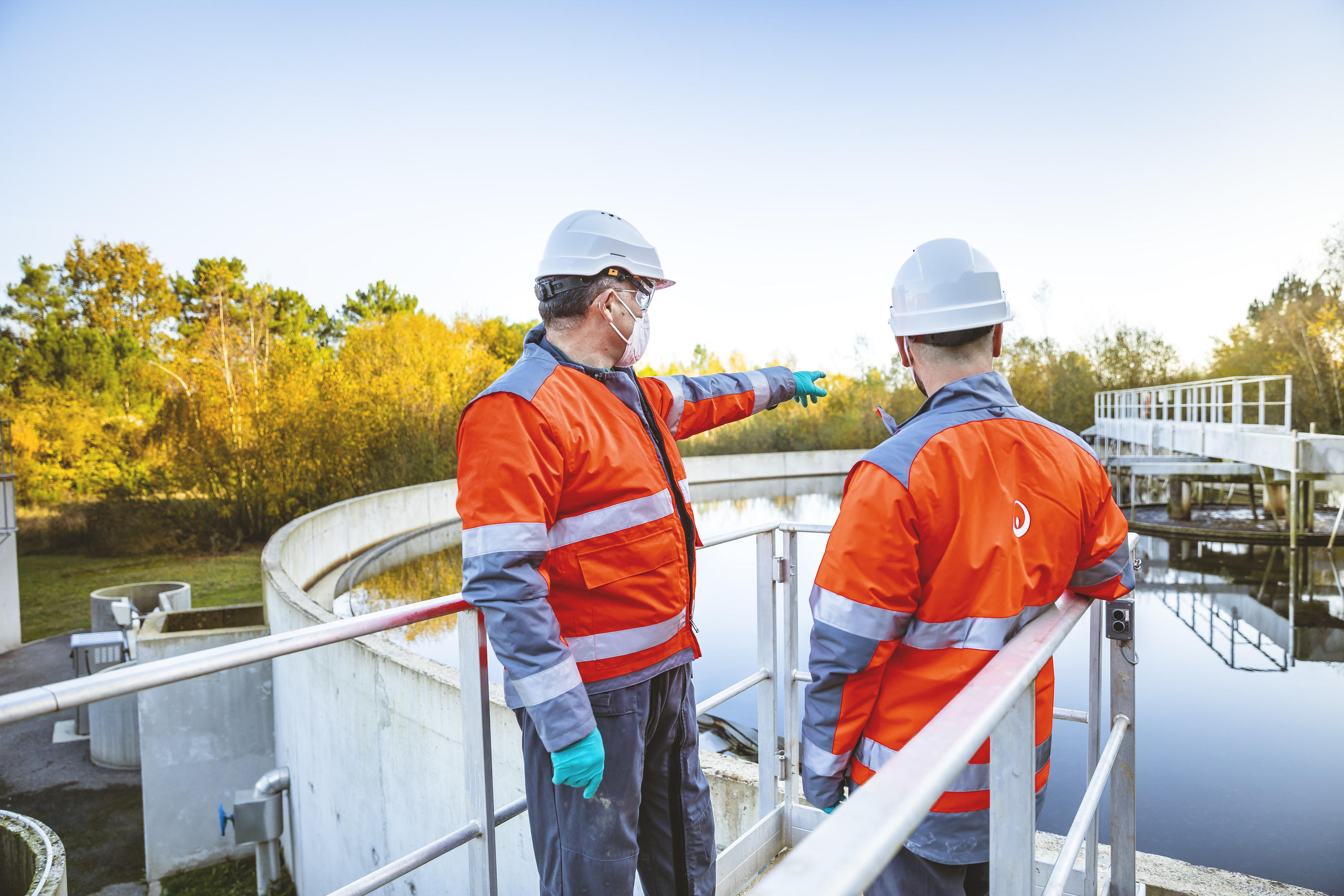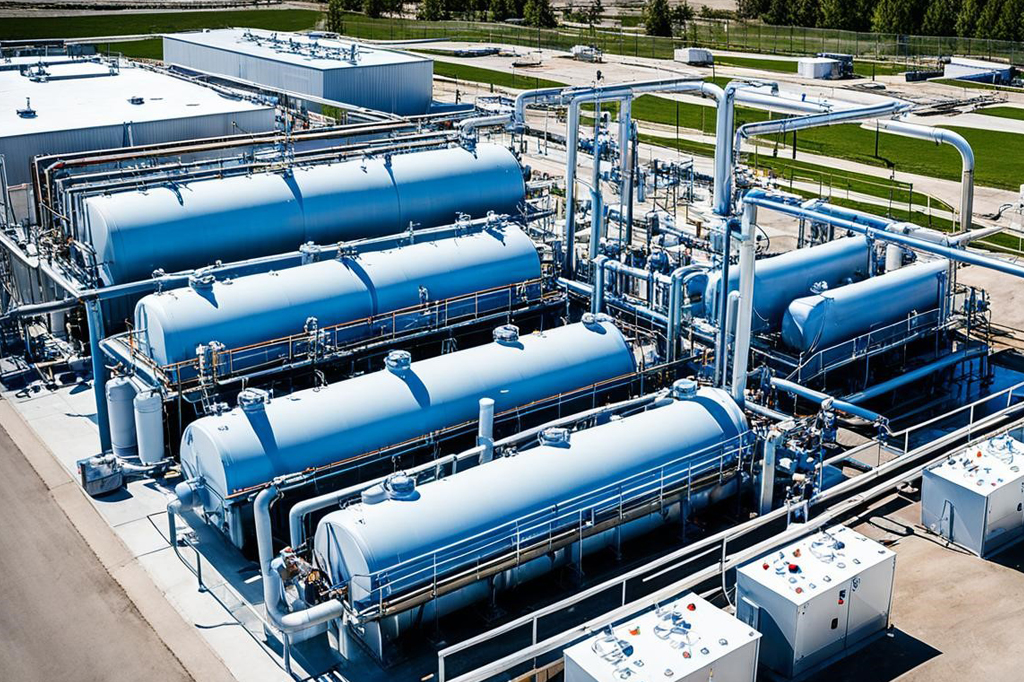Industrial Waste Water Treatment-- Efficient Waste Monitoring for Manufacturing Facilities
Industrial Waste Water Treatment-- Efficient Waste Monitoring for Manufacturing Facilities
Blog Article
Key Methods in Hazardous Waste Water Treatment Procedures
The therapy of industrial wastewater is a vital facet of environmental monitoring, including a variety of techniques created to minimize the effect of impurities. From the essential physical methods that separate solids to the sophisticated chemical and organic processes that target details contaminants, each strategy plays a crucial role in accomplishing water quality standards. Developments in innovations such as membrane purification and advanced oxidation processes supply ingenious remedies for enhancing treatment efficiency. Understanding exactly how these approaches adjoin and their implications for sustainability increases vital questions regarding the future of wastewater monitoring in sector.
Physical Treatment Methods
How effectively can physical treatment methods address the complexities of commercial wastewater? Physical therapy approaches play a crucial duty in the initial phases of wastewater administration, focusing mostly on the elimination of solids and big particulates. Methods such as sedimentation, flotation, and purification are vital for decreasing the concentration of suspended solids, consequently boosting the efficiency of subsequent therapy processes.
Sedimentation includes the gravitational settling of solids, enabling for the separation of larger materials from the wastewater. This method is specifically reliable in clearing up water prior to chemical or biological therapies. Filtering, on the other hand, makes use of different media to capture particle matter, ensuring that smaller sized contaminants are gotten rid of. This method can be customized to fit different kinds of industrial effluents, creating clearer effluent streams.
In addition, flotation approaches, which utilize air bubbles to raise suspended solids to the surface for elimination, work in dealing with wastewater with high concentrations of fats, oils, and greases. On the whole, physical treatment approaches serve as an essential very first step in the comprehensive administration of commercial wastewater, guaranteeing that the lots on subsequent treatment phases is minimized and improving total treatment effectiveness.
Chemical Therapy Strategies
While physical treatment methods lay the foundation for effective wastewater monitoring, chemical treatment techniques are essential for dealing with the a lot more complex contaminants commonly located in commercial effluents. These methods use various chemical representatives to precipitate, reduce the effects of, or oxidize hazardous materials, guaranteeing an extra complete removal of contaminants.
One usual method is coagulation and flocculation, where chemical coagulants such as light weight aluminum sulfate or ferric chloride are included in advertise the gathering of suspended bits. This procedure enhances solid-liquid splitting up, lowering turbidity and improving water top quality. Additionally, neutralization processes are utilized to readjust the pH of wastewater, using acids or bases to counteract acidic or alkaline streams, respectively.
Oxidation-reduction reactions play a critical role in degrading natural impurities and pathogens. Chemical oxidants like hydrogen, ozone, or chlorine peroxide are utilized to break down complicated natural substances, making them much less hazardous or a lot more eco-friendly. Advanced oxidation processes (AOPs) integrate several oxidation strategies to boost pollutant removal effectiveness.
Organic Therapy Processes
The efficiency of wastewater therapy is significantly enhanced by biological therapy procedures, which harness the all-natural metabolic activities of microbes to break down natural issue and get rid of pollutants. Industrial Waste Water Treatment. These processes primarily involve cardio and anaerobic food digestion, each customized for certain sorts of wastewater
Cardiovascular treatment processes make use of oxygen to sustain microbial development, promoting the break down of organic toxins right into carbon dioxide and water. Usual approaches consist of triggered sludge systems, where aeration containers promote the mixing of wastewater with microorganisms, and trickling filters, which urge biofilm advancement on media surfaces.
Conversely, anaerobic therapy procedures occur in the absence of oxygen, using anaerobic bacteria to decompose natural you could check here matter, resulting in biogas manufacturing, a renewable power source. Anaerobic digesters are typically employed in commercial settings for this objective, efficiently reducing the quantity of sludge while generating beneficial biogas.
The choice of an organic treatment approach depends upon wastewater characteristics, therapy objectives, and regulative standards. The combination of organic processes in wastewater therapy not only boosts pollutant elimination efficiency however also promotes sustainability by decreasing chemical usage and sustaining resource healing.
Advanced Oxidation Processes

Common AOP methods consist of Fenton's photocatalysis, ozonation, and reagent. Fenton's reagent, a combination of try this site hydrogen peroxide and ferrous iron, militarizes the development of hydroxyl radicals, making it effective for treating wastewater consisting of phenolic substances and other recalcitrant compounds.
AOPs supply several advantages, consisting of lowered sludge production and the ability to treat wastewater with high focus of natural toxins. The implementation of AOPs requires careful consideration of operational parameters and cost-effectiveness, guaranteeing that these sophisticated methods are properly incorporated right into existing wastewater therapy systems.
Membrane Layer Filtering Technologies

Microfiltration works for eliminating put on hold bacteria and solids, while ultrafiltration targets smaller organic molecules and viruses. Nanofiltration connects the space in between ultrafiltration and turn around osmosis, effectively removing divalent ions and organic compounds. Reverse osmosis supplies the highest possible degree of filtration, made use of primarily for desalination and removing mono-valent ions.
Membrane technologies provide many benefits, including low energy usage compared to conventional treatment techniques, modular design for scalability, and the potential for water healing and reuse. However, obstacles such as membrane layer fouling and the demand for normal maintenance have to be addressed to make sure system efficiency. In general, membrane filtration innovations stand for an essential element of modern commercial wastewater therapy strategies, promoting sustainability and resource conservation in water monitoring.
Verdict
In conclusion, commercial wastewater therapy utilizes a diverse array of strategies, consisting of physical, chemical, biological, and progressed techniques. Each method plays a vital duty in successfully dealing with numerous pollutants, enhancing water top quality, and promoting resource sustainability. The assimilation of these techniques cultivates a detailed treatment approach, guaranteeing that commercial effluents satisfy governing requirements while minimizing ecological impact. Proceeded advancements in these techniques will additionally improve the effectiveness and effectiveness of wastewater treatment procedures in industrial setups.
The therapy of industrial wastewater is an important aspect of ecological administration, involving an array of methods developed to alleviate the influence of contaminants.Exactly how efficiently can physical therapy methods attend to the intricacies of commercial wastewater?Advanced oxidation procedures (AOPs) represent a cutting-edge method in industrial wastewater treatment, developed to successfully deteriorate natural toxins that are often resistant to conventional treatment methods (Industrial Waste Water Treatment).In final thought, industrial wastewater treatment utilizes a diverse range of techniques, including physical, chemical, biological, and advanced methods. Continued innovations in these approaches will even more enhance the effectiveness Check This Out and efficiency of wastewater treatment procedures in industrial settings
Report this page